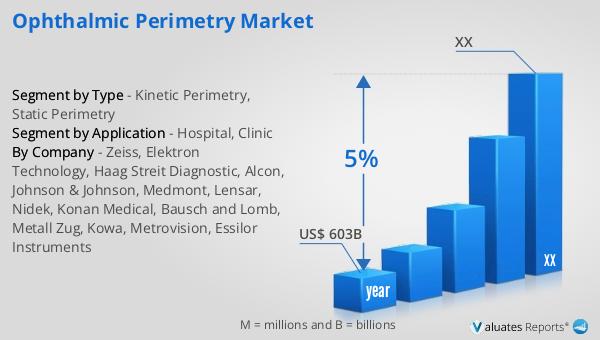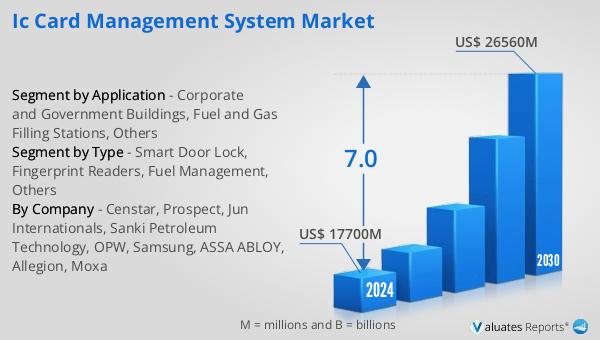What is Global Ophthalmic Perimetry Market?
The Global Ophthalmic Perimetry Market is a specialized segment within the broader medical device industry, focusing on devices used to measure the visual field of the eye. These devices are crucial in diagnosing and monitoring various eye conditions, such as glaucoma, which can lead to vision loss if not properly managed. The market encompasses a range of perimetry devices, including both kinetic and static perimeters, each serving different diagnostic purposes. The demand for ophthalmic perimetry devices is driven by the increasing prevalence of eye disorders, an aging population, and advancements in medical technology that allow for more precise and efficient eye examinations. Additionally, the growing awareness of eye health and the importance of regular eye check-ups contribute to the market's expansion. As healthcare systems worldwide continue to prioritize early detection and treatment of eye diseases, the Global Ophthalmic Perimetry Market is poised for significant growth, offering opportunities for innovation and development in diagnostic technologies. The market's evolution is also influenced by regulatory standards and the need for devices that provide accurate, reliable, and user-friendly results for both healthcare professionals and patients.

Kinetic Perimetry, Static Perimetry in the Global Ophthalmic Perimetry Market:
Kinetic perimetry and static perimetry are two fundamental techniques used within the Global Ophthalmic Perimetry Market to assess the visual field of patients. Kinetic perimetry involves moving a stimulus of known size and brightness from a non-seeing area to a seeing area until the patient detects it. This method is particularly useful for mapping the peripheral visual field and is often employed in cases where a detailed understanding of the outer edges of the visual field is necessary. It allows for the detection of scotomas, or blind spots, and can be tailored to assess specific areas of concern. On the other hand, static perimetry involves presenting a stationary stimulus at various locations within the visual field, with the intensity of the stimulus being varied to determine the threshold at which it is detected. This method is highly effective for detecting subtle changes in the central visual field and is commonly used in the diagnosis and monitoring of glaucoma. Static perimetry provides detailed information about the sensitivity of different parts of the visual field, making it an essential tool for tracking disease progression and the effectiveness of treatment. Both kinetic and static perimetry have their unique advantages and are often used complementarily to provide a comprehensive assessment of a patient's visual field. The choice between the two methods depends on the specific clinical requirements and the condition being evaluated. As technology advances, the integration of automated systems and software in perimetry devices enhances their accuracy and efficiency, allowing for more precise and reliable assessments. This technological evolution is a key driver in the Global Ophthalmic Perimetry Market, as it meets the growing demand for advanced diagnostic tools in ophthalmology. The development of user-friendly interfaces and the ability to store and analyze data digitally further contribute to the widespread adoption of these devices in clinical settings. As a result, both kinetic and static perimetry continue to play a vital role in the early detection and management of eye diseases, ultimately improving patient outcomes and quality of life.
Hospital, Clinic in the Global Ophthalmic Perimetry Market:
The usage of the Global Ophthalmic Perimetry Market in hospitals and clinics is integral to the delivery of comprehensive eye care services. In hospitals, ophthalmic perimetry devices are essential tools in the ophthalmology department, where they are used for the diagnosis and monitoring of various eye conditions. These devices enable healthcare professionals to assess the visual field of patients accurately, aiding in the detection of diseases such as glaucoma, retinal disorders, and neurological conditions that may affect vision. The ability to perform detailed visual field assessments allows for the early detection of abnormalities, facilitating timely intervention and treatment. In clinics, ophthalmic perimetry devices are equally important, providing optometrists and ophthalmologists with the means to conduct thorough eye examinations. The portability and ease of use of modern perimetry devices make them suitable for smaller clinical settings, where space and resources may be limited. Clinics often serve as the first point of contact for patients experiencing vision problems, making the availability of perimetry devices crucial for initial assessments and referrals to specialized care if necessary. The integration of advanced technology in perimetry devices, such as automated testing and digital data management, enhances their functionality and efficiency in both hospitals and clinics. This technological advancement allows for more streamlined workflows, reducing the time required for testing and improving the overall patient experience. Furthermore, the ability to store and analyze patient data digitally facilitates ongoing monitoring and comparison of visual field changes over time, supporting better clinical decision-making. The widespread adoption of ophthalmic perimetry devices in hospitals and clinics underscores their importance in the provision of high-quality eye care. As the prevalence of eye diseases continues to rise, driven by factors such as an aging population and increased screen time, the demand for accurate and reliable diagnostic tools like perimetry devices is expected to grow. This demand highlights the critical role of the Global Ophthalmic Perimetry Market in supporting healthcare providers in delivering effective and timely eye care services, ultimately improving patient outcomes and preserving vision.
Global Ophthalmic Perimetry Market Outlook:
Based on our research, the global market for medical devices is projected to reach approximately $603 billion in 2023, with an anticipated growth rate of 5% annually over the next six years. This growth trajectory reflects the increasing demand for advanced medical technologies and devices across various healthcare sectors. The expansion of the medical device market is driven by several factors, including technological advancements, an aging global population, and the rising prevalence of chronic diseases that require ongoing medical intervention. As healthcare systems worldwide strive to improve patient outcomes and enhance the quality of care, the adoption of innovative medical devices becomes increasingly important. The projected growth rate of 5% annually indicates a steady increase in market size, suggesting that the medical device industry will continue to be a vital component of the global healthcare landscape. This growth presents opportunities for companies within the industry to innovate and develop new products that address emerging healthcare needs. Additionally, the increasing focus on personalized medicine and minimally invasive procedures further fuels the demand for specialized medical devices. As the market evolves, companies that can adapt to changing healthcare trends and regulatory requirements are likely to succeed in capturing a significant share of the expanding market. The global medical device market's outlook remains positive, with continued growth expected as healthcare providers and patients alike seek more effective and efficient solutions for managing health conditions.
| Report Metric | Details |
| Report Name | Ophthalmic Perimetry Market |
| Accounted market size in year | US$ 603 billion |
| CAGR | 5% |
| Base Year | year |
| Segment by Type |
|
| Segment by Application |
|
| Consumption by Region |
|
| By Company | Zeiss, Elektron Technology, Haag Streit Diagnostic, Alcon, Johnson & Johnson, Medmont, Lensar, Nidek, Konan Medical, Bausch and Lomb, Metall Zug, Kowa, Metrovision, Essilor Instruments |
| Forecast units | USD million in value |
| Report coverage | Revenue and volume forecast, company share, competitive landscape, growth factors and trends |
